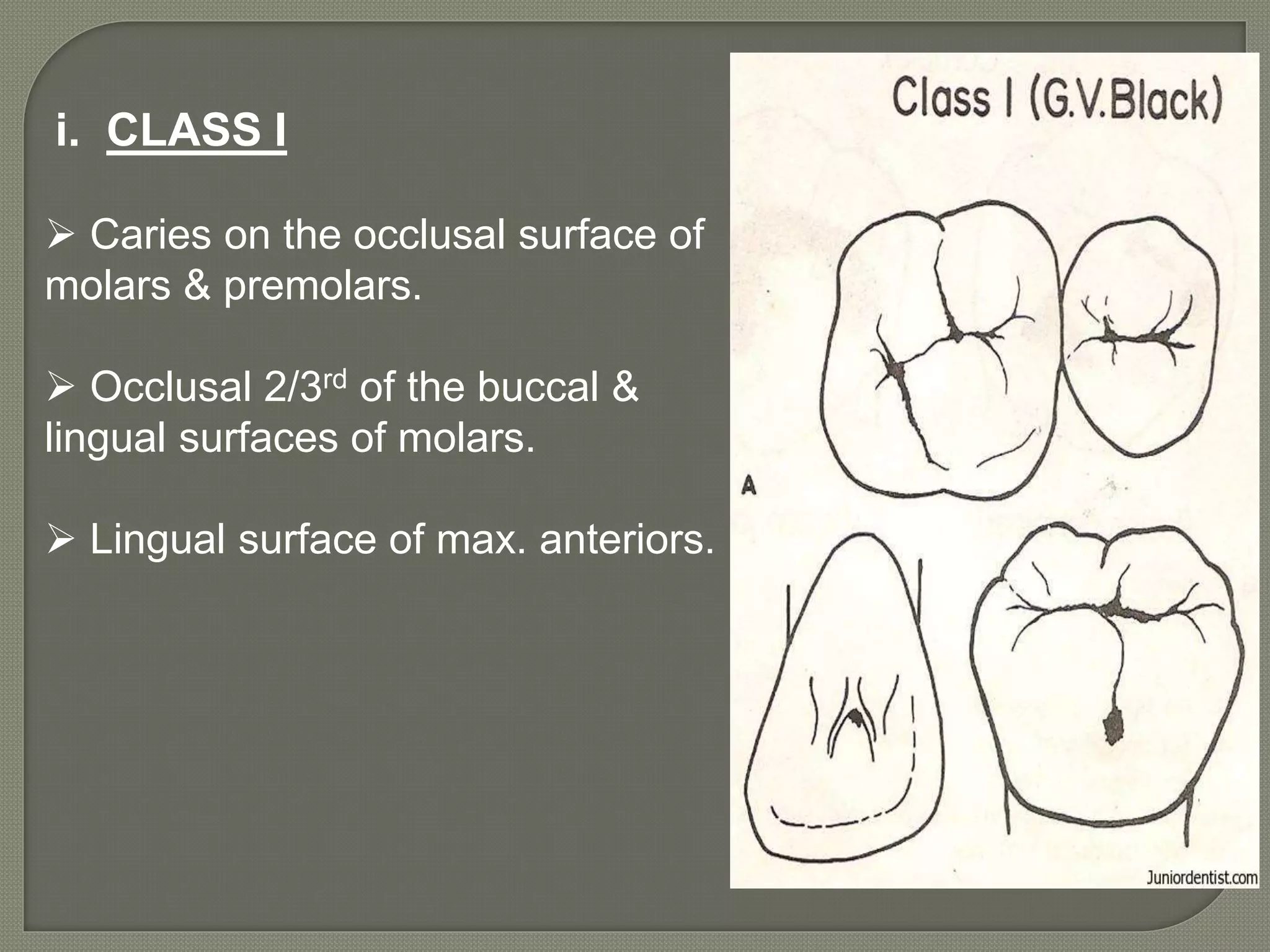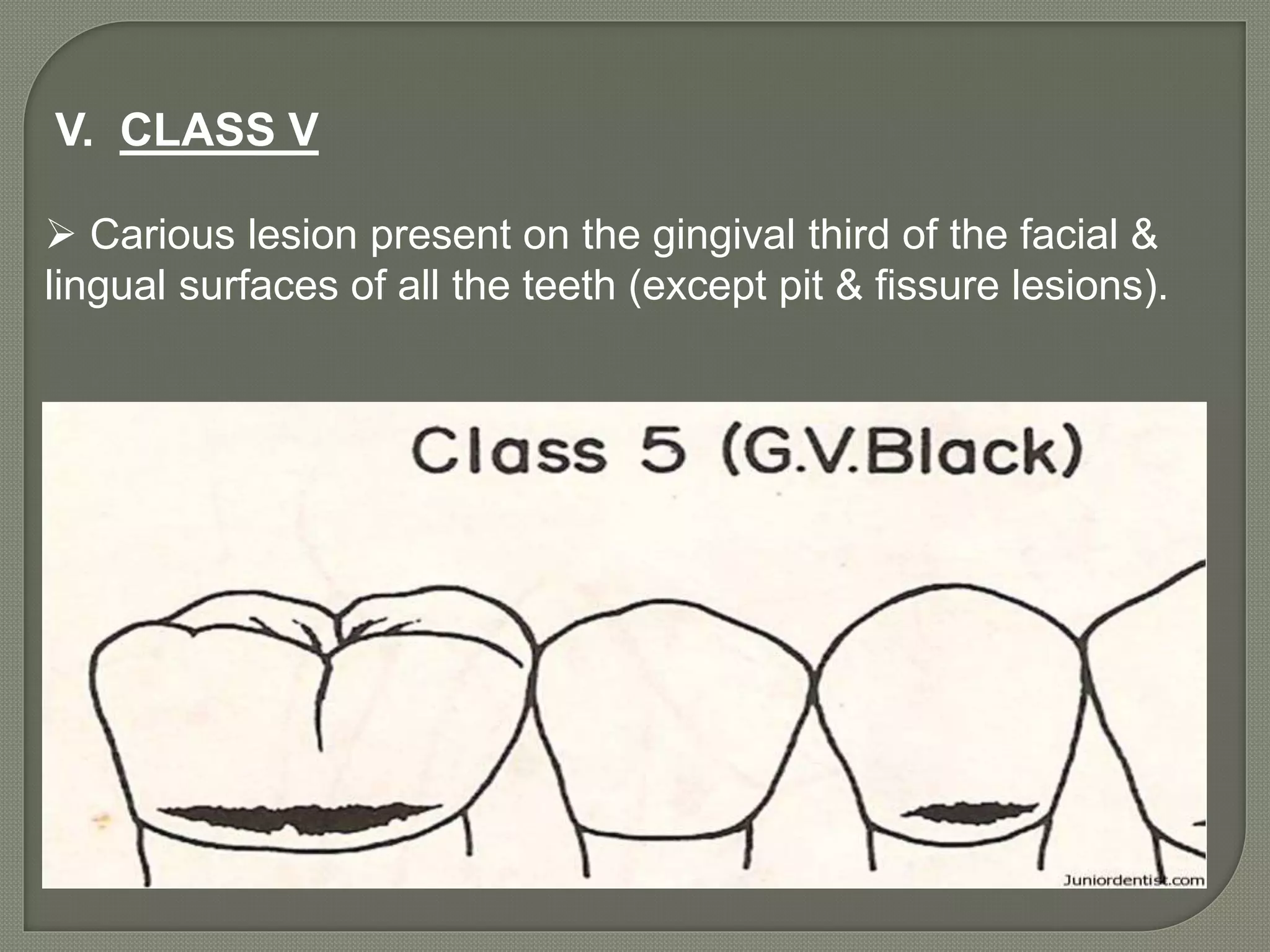This document provides an overview of dental caries, including its history, epidemiology, classification, etiology, histogenesis, diagnosis, and treatment. It discusses the evolution of dental caries throughout history from ancient civilizations to modern times. Key points include that dental caries is caused by bacteria in the mouth, affects most people worldwide, and has been found in human remains from 25,000 years ago. The document also provides various ways of classifying dental caries based on location, progression, extent, rate, age pattern, and number of tooth surfaces involved.



































































































































































![ A unique product with varied applications, G.C Tooth
Mousse is an effective way of managing incipient carious
lesions.
Its active ingredient is ACP-CPP
[amorphous calcium phosphate
- casein phosphopeptide].
ACP-CPP when applied onto
the tooth binds to the biofilms,
plaque, hydroxyapatite and the
surrounding soft tissue, thus increasing the bioavailability of
calcium and phosphate.
Question: G.C Tooth Mousse](https://image.slidesharecdn.com/dentalcariesseminar-190403194707/75/Dental-caries-operative-dentistry-164-2048.jpg)






















































































![The efficacy of the lasers will depend on numerous factors
including the wave length characteristics, pulse energy,
repetition rate and the optical properties of the incident tissue.
Lasers that are currently being investigated for more selective
hard tissue ablation include:
• Erbium: Yttrium – aluminum-garnet (YAG) and neodymium:
YAG – Mid infrared (IR) to IR emission
• CO2 laser – IR emission
• Excimer lasers (ArF [Argon: Freon] and XeCl [Xenon:
Chlorine]) UV emission
• Holmium lasers
• Dye enhanced laser ablation – exogenous dye, indocyanine
green in conjunction with a diode laser.
Minimal invasive dentistry REV I EW ARTICLE International Journal of
Contemporary Dental and Medical Reviews (2015), Article ID 170115,](https://image.slidesharecdn.com/dentalcariesseminar-190403194707/75/Dental-caries-operative-dentistry-251-2048.jpg)


